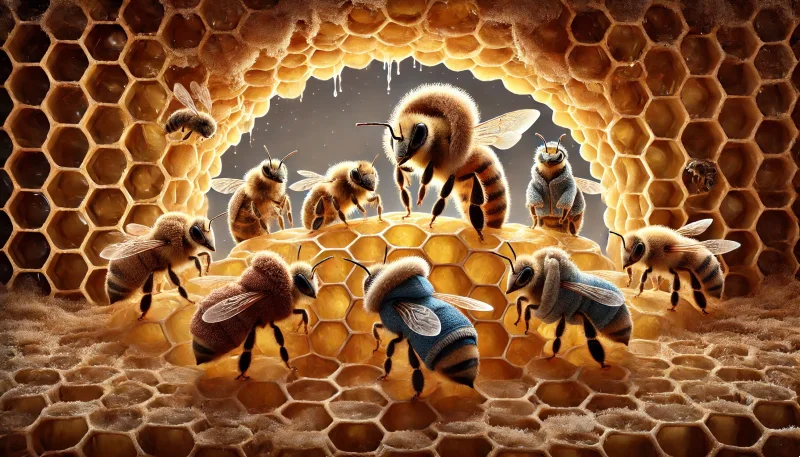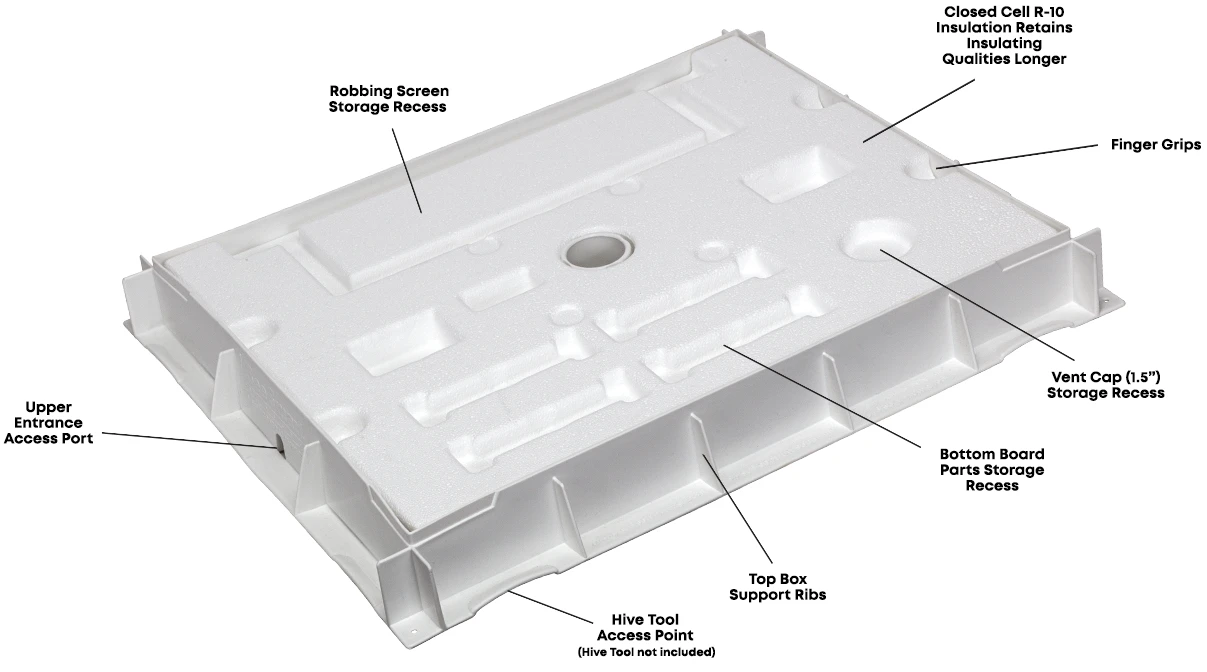Honey Bee Hive Winter Insulation: A Guide to Survival and Success
Winter is a tough season for honey bee colonies, but with the right insulation, you can help them thrive. Effective insulation isn’t just a good idea; it’s essential for ensuring your bees survive the cold winter months and emerge strong in the spring.
The Winter Cluster: A Survival Strategy
When temperatures drop below 50°F, honey bees cluster together to conserve heat and protect their queen. It’s practical, and adorable! This winter cluster moves upward through the hive, consuming honey as they go. Below 40°F, bees vibrate their wing muscles to generate warmth, focusing all their efforts on maintaining a survivable temperature within the cluster.

This is why insulation is everything. It is, very literally, the difference between life and death for your honey production. It reduces the need for bees to expend energy on heating, allowing them to conserve their honey stores.
In nature, bees overwinter in tree cavities, surrounded by natural insulation. In our structured wooden hives, bees need extra help to maintain warmth.
Insulation helps by reducing heat loss and keeping the hive environment stable. It also cuts down on honey consumption because bees don’t have to work as hard to stay warm.
The Types and Full Benefits of Insulation
Using insulation materials like quilt boxes, hive wraps, and insulated inner covers can make a significant difference, as in, they can save your hive!
Quilt boxes, filled with wood shavings, absorb moisture, and provide an insulating layer.
Hive wraps, made of vinyl or foam board, wrap around the hive to keep heat in.
Insulated inner covers, like those from BeeMax and BeeSmart, add an extra layer of protection via insulation.
Quilt Box
Quilt boxes are especially useful. They sit atop the hive and are filled with materials like wood shavings or sawdust. These materials absorb moisture from the hive, preventing condensation from dripping back down onto the bees. This insulation method not only keeps the hive warm, but also ensures the bees remain dry, which is crucial for their health. And, they’re pretty cheap to put together with things around your house.
Hive Wrap

Hive wraps are another excellent option. These wraps are made from materials like foam board or vinyl-coated insulation, which help retain heat within the hive. By wrapping the hive, you create a barrier against the cold air, ensuring that the bees expend less energy to keep the cluster warm. This method is simple to implement and highly effective in colder climates.
You can purchase commercial hive wraps for $30 to $40 per wrap, or make your own for much less. We found a quick 4-minute video that demonstrates how easily you can make your own hive wrap.
Insulated Inner Cover
Insulated inner covers help to maintain a stable temperature within the hive and reduce the amount of heat loss. They’re designed to fit snugly over the top of the hive, providing an extra buffer against the cold.
Managing Moisture and Ventilation
Condensation is a major threat to wintering bees. Cold air inside the hive can cause warm, moist air from the cluster to condense, forming droplets that chill the bees. Proper ventilation is key to managing this moisture. Upper entrances and moisture quilts help ensure that air flows through the hive, preventing excess condensation while still allowing bees to access the water they need.
Condensation occurs when warm air from the bee cluster meets the cold surfaces of the hive. This can result in water droplets forming and dripping onto the bees, causing them to chill and potentially die. To prevent this, it’s essential to balance insulation with good ventilation. Upper entrances allow warm air to escape, reducing the risk of condensation buildup. Moisture quilts, which sit above the inner cover, absorb excess moisture and help maintain a dry environment within the hive.
Good ventilation also helps in regulating the hive’s internal environment. Even during the cold winter months, bees produce a significant amount of heat and moisture through their metabolic processes. Without adequate ventilation, this moisture can accumulate and create a damp, unhealthy environment for the bees. By ensuring proper airflow, you can maintain a balance between warmth and dryness.
An insulated inner cover can help with airflow, temperature control, and even protection for your bees. We found this handy video that walks you through inner covers. It’s 12 minutes, so feel free to 1.5x the playback speed.
Preparing Your Hive for Winter
In addition to insulation, other winter preparations are vital. Mouse guards prevent rodents from entering the hive and damaging the comb. Ensuring the hive has enough honey or supplemental feeding is crucial for the bees’ survival. Configuring the hive size to match the colony size helps maintain a warm environment. Too much space can be as detrimental as too little.
Mouse guards are simple devices placed over the hive entrance to prevent mice from getting inside. These guards allow bees to enter and exit the hive freely, while keeping rodents out. Mice are attracted to the warmth and honey stores within the hive and can cause significant damage if they gain access. Installing mouse guards is a straightforward yet essential step in winterizing your hive.
Ensuring that your hive has enough honey stores is another critical aspect of winter preparation. Bees need a substantial amount of honey to survive the winter months, as they consume it to generate heat. If honey stores are insufficient, you may need to provide supplemental feeding. This can be done using sugar fondant or dry granulated sugar placed in feeders on top of the hive. These emergency food supplies can help prevent starvation during the coldest months.
The configuration of your hive also plays a crucial role in winter survival. The size of the hive should match the size of the colony. A large hive with a small colony will be challenging to heat, while a small hive with a large colony may run out of resources quickly. Finding the right balance is essential for maintaining a stable and warm environment for your bees.
High-Tech Monitoring and Traditional Methods
Regular monitoring of your hives can help you adjust your insulation strategies. High-tech tools like sensors and thermal imaging can provide detailed insights into hive conditions. Low-tech methods, such as using a stethoscope to listen to the bees, are also effective. Continually refining your approach based on hive performance and weather patterns is essential for successful beekeeping.
High-tech monitoring tools, such as electronic sensors, can measure various hive parameters, including temperature, humidity, and weight. These sensors can provide real-time data, allowing you to make informed decisions about your hive’s insulation and ventilation needs. Thermal imaging cameras are another valuable tool. They can visually display the temperature distribution within the hive, helping you identify areas where heat is being lost.
Traditional methods of monitoring, like using a stethoscope, can also be effective. By placing a stethoscope against the hive, you can listen to the bees and determine their activity level and cluster location. This method, while less precise than high-tech tools, provides valuable information about the hive’s internal conditions.
Additional Tips for Winter Beekeeping
Location Matters
The placement of your hives can significantly impact their winter survival. A southern exposure will allow for more solar heating during the day. Avoid placing your hives in low spots where cold air tends to settle at night. Windbreaks, either natural or man-made, can help protect your hives from harsh winds, reducing heat loss.
Hive Wraps and Insulated Hives
Hive wraps, whether purchased or homemade, can provide additional insulation. Vinyl-coated wraps and foam board insulation are popular choices. Insulated hives, such as those with double walls, offer built-in protection against the cold. These hives typically have a higher R-value, which measures the material’s resistance to heat transfer. The higher the R-value, the better the insulation.
Managing Heat Transfer
Understanding heat transfer within the hive is crucial for effective insulation. Bees don’t heat the entire hive; they focus on maintaining the cluster’s temperature. Any retained heat within the hive reduces the bees’ workload, conserving energy and honey stores.
Avoiding Condensation
While insulation is vital, managing condensation is equally important. Cold air holds less moisture, so when warm air from the cluster meets the cold surfaces of the hive, condensation can form. Proper ventilation helps mitigate this risk. Upper entrances and quilt boxes are effective in allowing excess moisture to escape.
Maintaining Hive Health
Making sure your bees are healthy going into winter is crucial. A weak hive is less likely to survive the cold months. Regularly check for signs of disease or parasites, and treat them promptly. A strong, healthy colony has a much better chance of making it through the winter. And don’t forget that some queen bee varieties are more suited to get your colony through winter than others.


Real-Life Beekeeping Examples
Imagine this: You’ve set up your hive with careful insulation, using quilt boxes filled with wood shavings and wrapping the hive in a vinyl-coated wrap. Winter arrives with its harsh winds and freezing temperatures. You monitor your hive using a thermal imaging camera and see the cluster snugly nestled inside, maintaining a warm temperature. Come spring, your bees emerge strong and ready for the new season, thanks to your diligent winter preparations.
Another beekeeper in a warmer climate decides to focus more on ventilation, using moisture quilts and upper entrances. Despite milder temperatures, condensation is a concern. By balancing insulation and ventilation, this beekeeper ensures that the bees remain dry and healthy. The colony thrives, with plenty of honey reserves left for spring harvesting.
Why these examples? To show you the importance of adapting your winter beekeeping strategies to your specific climate and conditions. A beekeeper in Maine and a beekeeper in San Antonio, TX are dealing with two very different versions of winter.
The fact is that what works in one region may not be suitable for another. Continuous learning and adjustment are key to successful beekeeping. And don’t hesitate to reach out to establish beekeepers in your region for some sage advice, particularly if you’re a new beekeeper.
FAQ: Common Questions About Honey Bee Hive Winter Insulation
Q: Why is it important to insulate bee hives during winter?
A: Insulating bee hives during winter helps maintain a stable temperature inside the hive, reducing the energy bees need to generate heat. This conserves their honey stores and improves their chances of survival through the cold months.
Q: What are the best materials for beehive insulation?
A: Some of the best materials for beehive insulation include quilt boxes filled with wood shavings, vinyl-coated hive wraps, and insulated inner covers. Foam board and blue foam board are also popular for DIY hive wraps.
Q: How does a quilt box help with hive insulation?
A: A quilt box, placed on top of the hive, is filled with materials like wood shavings or sawdust. It absorbs moisture from inside the hive and provides an insulating layer, preventing condensation from dripping onto the bees.
Q: Should I use an upper entrance for my hive during winter?
A: Yes, an upper entrance helps with ventilation by allowing warm, moist air to escape. This reduces the risk of condensation forming inside the hive, which can chill and harm the bees.
Q: What are the benefits of using a hive wrap?
A: Hive wraps, made from materials like vinyl or foam board, help retain heat within the hive. They create a barrier against cold air, reducing the bees’ need to generate heat and conserving their honey stores.
Q: How can I prevent moisture buildup inside the hive?
A: To prevent moisture buildup inside the hive, ensure good ventilation and use moisture-absorbing materials like quilt boxes for upper entrances. Placing a moisture board under the hive lid can also help absorb excess water vapor. Ensuring a small opening at the top of the hive allows warm, moist air to escape, reducing the risk of condensation.
Q: What is the role of a mouse guard in winter hive preparation?
A: A mouse guard is placed over the hive entrance to prevent rodents from entering the hive and damaging the comb. It allows bees to enter and exit freely while keeping mice out.
Q: How does the hive’s location affect its winter survival?
A: The hive’s location significantly impacts its winter survival. A southern exposure provides more solar heating during the day. Avoid placing hives in low spots where cold air settles. Windbreaks can protect hives from harsh winds, reducing heat loss.
Q: What is the significance of the R-value in hive insulation?
A: The R-value measures a material’s resistance to heat transfer. Higher R-values indicate better insulation. Insulated hives with higher R-values retain more heat, reducing the bees’ need to generate warmth.
Q: Can I use foam insulation for my hives?
A: Yes, foam insulation, such as blue foam board, is effective for DIY hive wraps. It provides excellent insulation and helps retain heat within the hive.
Q: What should new beekeepers know about winterizing hives?
A: New beekeepers should focus on insulating the hive, ensuring proper ventilation, and protecting against moisture. It’s also crucial to ensure the hive has enough honey stores or provide supplemental feeding.
Q: How do commercial beekeepers handle hive insulation?
A: Commercial beekeepers often use insulated inner covers, hive wraps, and quilt boxes to protect their hives. They also monitor hive conditions closely using high-tech tools like sensors and thermal imaging.
Q: What are some common winter hive issues?
A: Common winter hive issues include moisture problems, heat loss, and rodent infestations. Ensuring proper insulation, ventilation, and using mouse guards can help mitigate these issues during cold weather.
Q: How does wrapping hives with materials like sheet foam help in cold climates?
A: Wrapping hives with materials like sheet foam provides an additional layer of insulation, helping to retain heat within the hive. This method is particularly effective in cold climates, where maintaining a stable internal temperature is crucial for the bees’ survival. The foam acts as a barrier against the cold, reducing the bees’ need to generate extra heat.
Q: Why is it important to maintain hive ventilation in warmer climates during winter?
A: In warmer climates, maintaining hive ventilation during winter helps prevent the buildup of moisture and carbon dioxide inside the hive. Even though the external temperatures are milder, bees still produce moisture and CO2 through their metabolic processes. Proper ventilation ensures a healthy internal environment, preventing issues related to excessive moisture and poor air quality.
Q: How do screened bottom boards help in winter?
A: Screened bottom boards can provide ventilation and help control moisture levels inside the hive. They allow for better airflow, which can reduce humidity and prevent condensation. However, in very cold climates, some beekeepers prefer to close the bottom boards to retain more heat within the hive.
Q: What are the benefits of using a candy board for winter feeding?
A: A candy board provides a solid source of sugar for the bees to consume during the winter when honey stores might run low. This method ensures the bees have access to food without needing to break cluster, which can be crucial during prolonged cold spells. The candy board is placed inside the hive, above the top bars, making it easily accessible for the bees.
Q: How do I use tar paper to insulate my hives?
A: Wrapping hives with tar paper is a traditional method to provide insulation and protect the hive from cold winds. The black color of the tar paper absorbs radiant heat from the sun, helping to warm the hive on sunny winter days. Simply wrap the tar paper around the hive bodies, ensuring it covers the hive from the bottom boards to the hive top, and secure it with staples or tape.
Q: What is the role of a hive cover and outer cover during winter?
A: The hive cover and outer cover protect the hive from external elements like rain, snow, and wind. During winter, it’s essential to have a well-fitted outer cover to prevent moisture from entering the hive. Additionally, the hive cover helps retain heat inside the hive, contributing to the overall insulation.
Conclusion
Insulating your honey bee hives is a crucial step in winter beekeeping. By understanding the needs of your bees and using the right materials and techniques, you can create a well-insulated hive that will thrive through the cold winter months.
Every beekeeper’s situation is unique, so experiment with different methods and find what works best for your hives. With careful preparation and monitoring, your bees will be ready to face the winter and flourish in the spring.
Remember, the most important step in winter beekeeping is to ensure your hive is well-insulated and properly ventilated.
This balance helps maintain the right environment for your bees, reducing their energy expenditure and preserving their honey stores.
Whether you use quilt boxes, hive wraps, or insulated inner covers, the goal is the same: to protect your bees from the cold and keep them healthy.
By following these guidelines and continuously refining your approach, you can improve your beekeeping practices and increase the survival rates of your honey bee colony.
Embrace the challenge of winter beekeeping, and take pride in knowing that your efforts contribute to the health and sustainability of your bees even in cold temperatures.



















